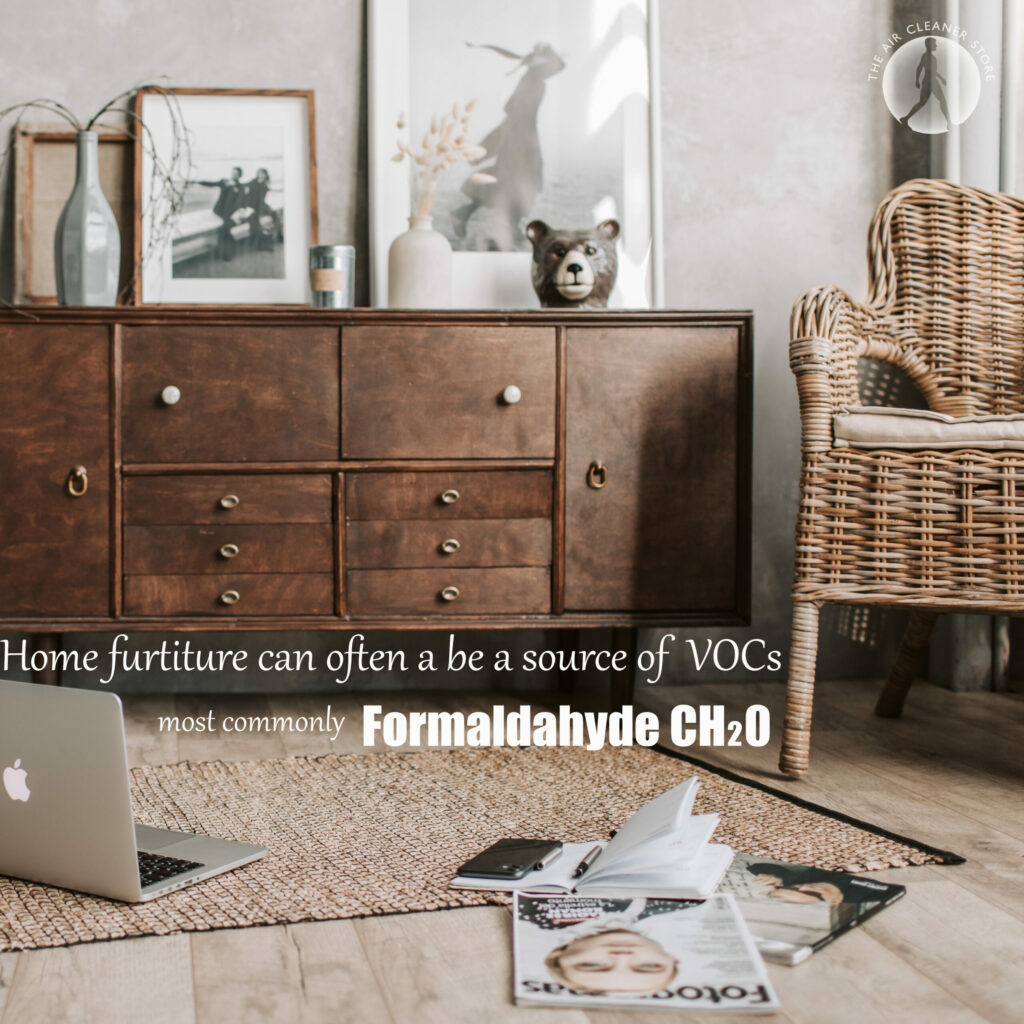What are Volatile Organic Compounds?
VOCs, or volatile organic compounds, are chemicals that are released into the air from a wide range of the products that we use in our lives. These compounds have a high vapor pressure, which means they change from a liquid or solid state into a gas at room temperature. Additionally, VOCs often have low water solubility and do not stay dissolved in water. This combination of having a high vapor pressure and low water solubility means that VOCs evaporate easily at normal atmospheric conditions. The process of their emission is referred to as “off-gassing” or “outgassing.”
Many of the products we use contain VOCs. During the manufacturing process, the VOCs are trapped in the product, or in it’s packaging. “Off- gassing” or “outgassing” occurs when these compounds are released into the air. Many VOCS are harmful , some can even cause cancer. Once in the air, they can also react with other gases and produce other pollutants.
VOCS are found in both indoor and outdoor environments.
Classification of VOCs
Since a compound’s volatility increases as its boiling point temperature decreases, the volatility of organic compounds is often defined and graded by it’s boiling point.The higher the volatility (lower the boiling point), the more likely the compound will be emitted from a product or surface into the air at room temperature.
The World Health Organization (WHO) categorizes indoor pollutants by the ease they are emitted:
- Very volatile organic compounds (VVOCs)
- Volatile organic compounds (VOCs)
- Semi-volatile organic compounds (SVOCs)
VOCS in Your Home.
Have you ever wondered why new items have a specific smell? You may have already found that a new mattress,a new piece of furniture, or a new coat of paint emits a distinct odor when introduced into our homes.
VOC concentrations in indoor air are usually two to five times higher than those detected in outdoor air, according to the EPA. A wide range of items, such as paints, mattresses, and carpets, and even fragrances, cleaning products and self care products can be possible sources of off-gassing in your home.
At room temperature, these VOCs evaporate, or off-gas, giving the room a “new” smell.
Sources of VOCs in your home are classified in 3 main groups:
- Building Materials
These include : paint, varnishes, caulks, adhesives, carpet, vinyl flooring, composite wood products upholstery and foam.
- Home & Personal Care Products
These include : air fresheners, cleaning products, cosmetics, perfumes, fuel oil and gasoline.
- Activities
These include: smoking, dry cleaning, photocopiers, cooking, burning wood etc.
VOCs vs Your Health
The risk of developing adverse health effects from inhaling any chemical is proportional to the amount they are present in the air, as well as the length and frequency a person breathes it in.
Long-term exposure to low levels of VOCs can increase the risk of health problems for some people. According to several reports, VOC exposure can aggravate symptoms in people with asthma or people who are more sensitive to chemicals (multiple chemical sensitivities (MCS).
The most common short term exposure (hours to days) symptoms include :
- Eye, nose & throat irritation
- Dizziness
- Nausea and vomiting
- Headaches
- Worsening of asthma
- Loss of concentration
- Behavioral changes
Long term exposure (years to a lifetime) cause more serious chronic conditions like:
- Cancer
- Liver & kidney damage
- Central nervous system damage
- Depression
How to Reduce VOCs at Home
Even though sources of VOCs can sometimes be tricky to pinpoint, here is a list of things you can do to reduce your exposure to such components in the air of your home.
- Switch to Low-VOC goods, when buying paints and construction materials .
If you decide to use products with high VOCs levels, open windows with exhaust fans to bring the indoor air outside. The concentration of VOCs indoors can be decreased by increasing the amount of fresh air in your house.
- Before installing new carpet or construction materials, let them air out to release VOCs.
- Invest in a High Quality Air cleaner. A great one is Austin Air Healthmate.
- Avoid storing VOC-containing goods indoors, including your garage (ex. paint, gasoline)
- Make your home a smoking free zone!
